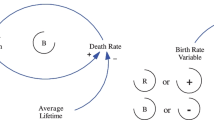Abstract
This paper presents an empirical analysis of the life span of over 180 systems aimed at developing a model for determining the planning horizon for new software at the business case stage of software acquisition. At this early stage, the firm has limited knowledge about the project, but must make crucial decisions, such as scope (breadth of requirements), approach (both insource vs. outsource and custom vs. package) and technology, including fit with standards (adhere to current vs. adopt new technology). These decisions are associated with different system lifetimes that, in turn, impact both the costs incurred and benefits received from the system. The failure to explicitly and properly address these differences can lead to the implementation of systems better left undone or to unintended consequences, such as the Y2K problem. We find that technology and approach, but not scope decisions are strongly related to system lifetime. In particular, systems that use an operating system that conforms to the firm’s standard or are acquired using a blended team entail longer system life. On the other hand, shorter system life is indicated if the system is technically complex, custom developed or uses an older programming language. Furthermore, modified packaged software is shorter lived than is a vanilla package. In addition, environmental variables also impact the appropriate horizon. For example, as one would expect, strategic systems are used longer. On the other hand, somewhat surprisingly, systems sponsored by executives last less long and despite the quickening pace of technological and business process advancement, a small trend toward longer lived systems is uncovered.
Similar content being viewed by others
References
R.D. Banker, S.M. Datar, C.F. Kemerer and D. Zweig, Software complexity and maintenance costs, Communications of the ACM 36 (1993) 81–94.
E. Barry, C. Kemerer and S. Slaughter, How development decisions affect product volatility: a longitudinal study of software change histories. GSIA Working Paper 2003-E66, (2003).
A. Barua and T. Mukhopadhyay, A cost analysis of the software dilemma: to maintain or to replace, Proceedings for the Twenty-Second Hawaii International Conference on Systems Sciences (1989).
V. Basu, E. Hartono, A.L. Lederer and V. Sethi, The impact of organizational commitment, senior management involvement, and team involvement on strategic systems planning, Information & Management 39 (2002) 513–524.
B. Boehm, Software Engineering Economics (Prentice Hall, New Jersey, 1981).
R. Bruner, Y2K cost disclosures eyed, Electronic News 10/4/1999.
T. Chan, S.L. Chung and T.H. Ho, Timing of software replacement, Proceedings of the 15th International Conference on Information Systems. Vancouver, Canada (1994) pp. 291–307.
L. Erlikh, Leveraging legacy system dollars for e-business, IEEE IT Pro (May/June 2000) 17–23.
D. Gode, A. Barua and T. Mukopadhyay, On the economics of the software replacement problem, Proceedings of the Eleventh International Conference on Information Systems. Copenhagen (1990) pp. 159–170.
W.H. Greene, Econometric Analysis (Prentice Hall, New Jersey, 2000).
M. Hanna, Maintenance burden begging for remedy, Software Magazine 13(6) (1993) 53–63.
J. Heales, Factors affecting information system volatility, Proceedings of the Twenty First International Conference on Information Systems (2000) pp. 70–83.
S. Kaplan, Pull the plug on your legacy applications, CIO (March 15 2002) 56–65.
R.E. Kass, and Adrian E Raftery, Bayes factors, Journal of the American Statistical Association 90(430) (1995) 773–795.
Kmart Press Release, Kmart to restructure supply chain operations. http://www.kmartcorp.com/corp/story/pressrelease/news/pr010906.stm.9/6/2001.
M.M. Lehman, J.F. Ramil, P. D. Wernick, D. E. Perry and W. M. Turski, Metrics and laws of software evolution—the nineties view. IEEE-CS Albuquerque, NM. 5–7, November 1997, pp. 20–32. Comp. Sci. Order No. PRO8093.
J.E. Lawless, Statistical Models and Methods for Lifetime Data (John Wiley and Sons, New York, 1982).
B.C. McNurlin, Replacing old applications, EDP Analyzer 21(3) (1983) 1–12.
P. Nelson, W. Richmond and A. Seidmann, Two dimensions of software acquisition, Communications of the ACM 39(7) (1996) 29–35.
G. Premkumar and W.R. King, An empirical assessment of information systems planning and the role of information systems in organizations, Journal of Management Information Systems 9(2) (1992) 99–126.
G. Premkumar and W.R. King, Organizational characteristics and information systems planning: An empirical study, Information Systems Research 5(2) (1994) 75–109.
L.H. Putnam, and W. Meyers, Measures for Excellence Reliable Software On Time, Within Budget (Prentice Hall, New Jersey, 1992).
A.E. Raftery, Approximate Bayes factors and accounting for model uncertainty in generalized linear models, Biometrika 83(2) (1996) 251–266.
B. Rosser, How to economically justify an IT investment. Research Note TU-14-1816, (2001), Gartner, Inc. http://www.gartner.com.
B. Schaller, The origin, nature, and implications of Moore’s law: The benchmark of progress in the semiconductor industry. Working Paper, School of Public Policy, George Mason University, (1996), http://mason.gmu.edu/rschalle/moorelaw.html.
Standish Group, The, The Standish Group Report: CHAOS. Technical Report, (1994).
E.B. Swanson, Framing the system replacement decision. Information Systems Working Paper 01-98 (1998) UCLA, Los Angeles, California. http://www.anderson.ucla.edu/acad_unig/info_sys.
E.B. Swanson and E. Dans, System life expectancy and the maintenance effort: Exploring their equilibration, MIS Quarterly 24(2) (2000) 277–297.
A. Taudes, Software growth options, JMIS 15(1) (1998) 165–185.
E. Wang, T. Barron and A. Seidmann, Contracting structures for custom software development: The impacts of informational rents and uncertainty on internal development and outsourcing, Management Science 43(12) (1997) 1726– 1744.
P. Weill and M. Vitale, Assessing the health of an information systems applications portfolio: An example from process manufacturing, MIS Quarterly 23(4) (1999) 601– 624.
Author information
Authors and Affiliations
Corresponding author
Rights and permissions
About this article
Cite this article
Richmond, W., Nelson, P. & Misra, S. An empirical analysis of software life spans to determine the planning horizon for new software. Inf Technol Manage 7, 131–149 (2006). https://doi.org/10.1007/s10799-006-8104-8
Issue Date:
DOI: https://doi.org/10.1007/s10799-006-8104-8




